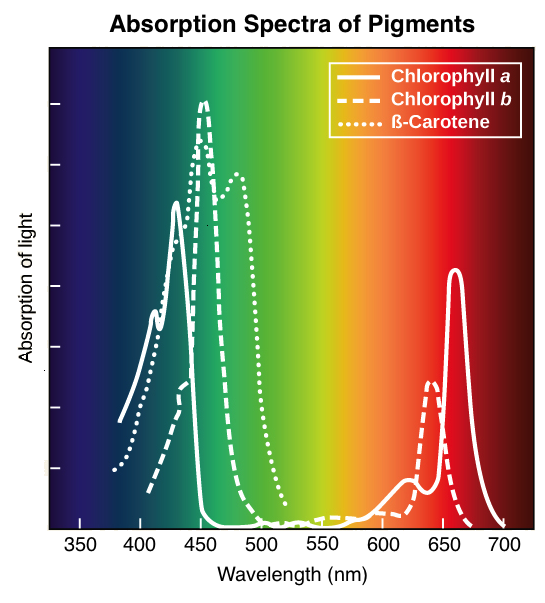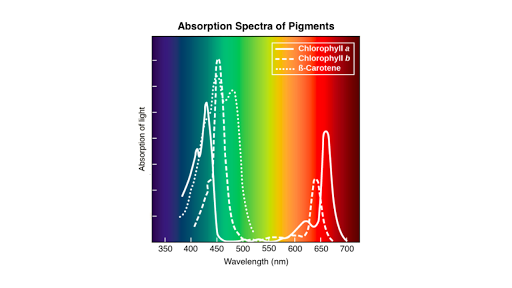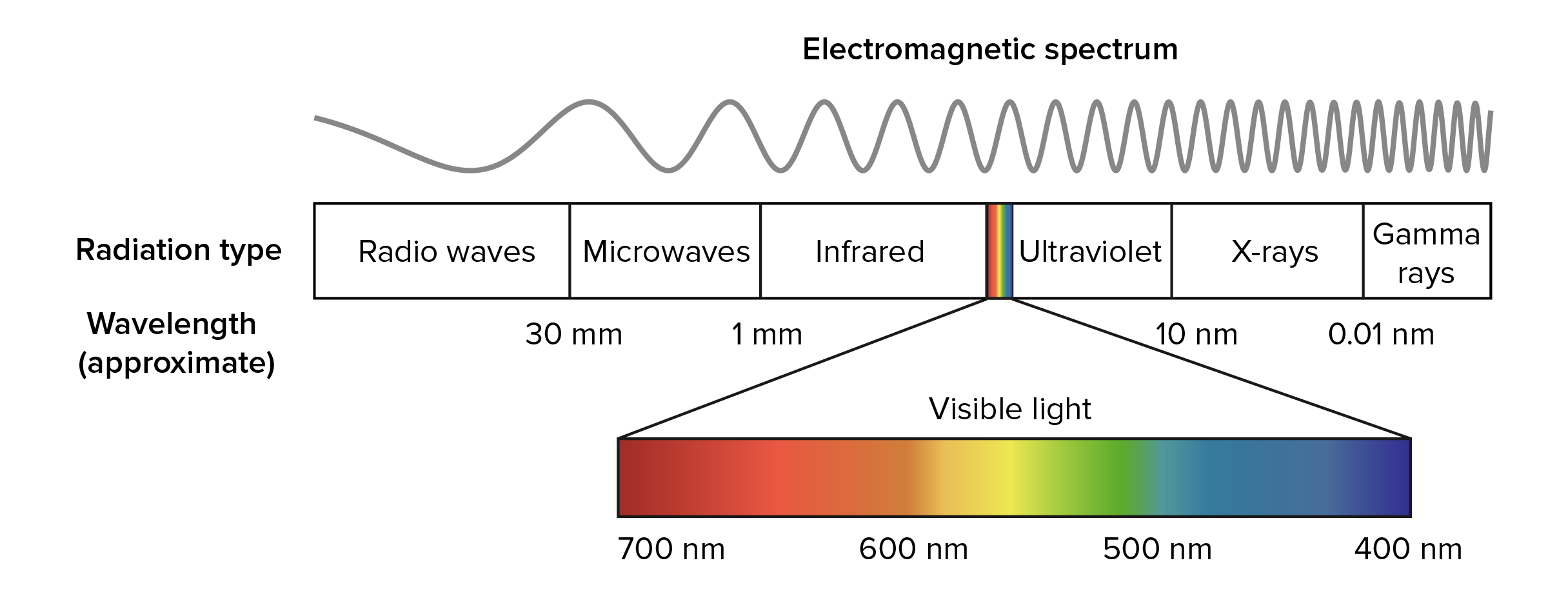What Wavelength of Light Is Best for Photosynthesis
Therefore the best light sources for photosynthesis should ideally emit light in the blue and red ranges. The best wavelengths of visible light for photosynthesis fall within the blue range 425450 nm and red range 600700 nm.

What Would Be The Best Wavelength For Photosynthesis Quora
Click to see full answer.

. In light reaction of photosynthesis two kinds of photons are absorbed by photo systems. If it is the only light the plant will be soft and tall. Blue light promotes vegetative growth.
The best wavelengths of visible light for photosynthesis fall within the blue range 425450 nm and red range 600700 nm. As shown in detail in the absorption spectra chlorophyll absorbs light in the red long wavelength and the blue short wavelength regions of the visible light spectrum. As a note chlorophyll.
The visible light spectrum ranges from the wavelength of 400nm to 700nm which is also the photosynthetic active range of plants known as PAR area. In which Colour of light is the rate of photosynthesis highest. Therefore the very best light sources.
Similarly it is asked which wavelengths of light are the most effective in. The absorption spectrum of chlorophylls includes wavelengths of blue and orange-red light as is indicated by their peaks around 450-475 nm and around 650-675 nm. Red and blue light combined promotes flowering.
Therefore the best light sources for photosynthesis should ideally emit light in the blue and red ranges. 39 Related Question Answers Found. Do different colors of light affect the rate of photosynthesis experiment.
If it is the only light the plant will be shorter hard and dark in color. Light is electromagnetic radiation of different wavelengths or frequencies. The efficiency of red 650665 nm LEDs on plant growth is easy to understand because these wavelengths perfectly fit with the absorption peak of chlorophylls and phytochrome while the supplemented blue light introduced the idea that growth under natural light could be mimicked using blue and red LEDs.
RFR promotes stem elongation. The best wavelengths of visible light for photosynthesis fall within the blue range 425450 nm and red range 600700 nm. The region between 400 nm and 700 nm is what plants primarily use to drive photosynthesis and is typically referred to as Photosynthetically Active Radiation PAR.
Visible light ranges from low blue to far-red light and is described as the wavelengths between 380 nm and 750 nm. Photosynthesis is most efficient at light wavelengths between 400 and 500 nanometers and 600 to 700 nanometers. The pigment responsible for most light-harvesting by plants is chlorophyll a green pigment.
The colour of the leaf played a. The very best wavelengths of visible light for photosynthesis fall inside the blue range 425450 nm and red range 600700 nm. Photosynthesis requires light between 400 and 700 NM.
The green pigment chlorophyll restricts the efficiency of photosynthesis. Therefore the best light sources for photosynthesis should ideally emit light in the blue and red ranges. The green color indicates that it is absorbing all the non-green light-- the blues 425-450 nm the reds and yellows 600-700 nm.
Furthermore blue light is absorbed by carotenoids which pass the energy to the chlorophyll. Spectroradiometer measures light quality. Red light is more effective in photosynthesis because both the photosystems PS I and PS II absorb light of wavelengths in the red region 680 and 700 nm respectively.
In photosystem 1 they absorb light with 680nm wavelength and PS II absorb light with 700nm wavelength. Light in the red region is absorbed by chlorophyll. Visible light falls between 400 and 700 nanometers.
Absorption spectra can be depicted by wavelength nm on the x-axis and the degree of light absorption on the y-axis. Plants use visible light for photosynthesis. Special pigments in chloroplasts of plant cells absorb the energy of certain wavelengths of light causing a molecular chain reaction known as the light-dependent reactions of photosynthesis.
Red and yellow light is longer wavelength lower energy light while the blue light is higher energy. The best wavelengths of visible light for photosynthesis fall within the blue range 425450 nm and red range 600700 nm.

Wavelengths Of Light And Photosynthetic Pigments Article Khan Academy

Wavelengths Of Light And Photosynthetic Pigments Article Khan Academy
What Color Light Is Mostly Used In Photosynthesis Quora

Wavelengths Of Light And Photosynthetic Pigments Article Khan Academy
No comments for "What Wavelength of Light Is Best for Photosynthesis"
Post a Comment